
views
Finding a Garden Spider

Check your garden between May and November. Extreme cold temperatures will kill off garden spiders or make them harder to find since they won't be spinning webs. Plan on capturing a garden spider during warm spring, summer, and autumn months. If you live in a climate with extreme temperatures, you may need to protect the spider from freezing temperatures or severe heat. Pay attention to when you normally see spider webs in your yard. These are the best times to find a garden spider.
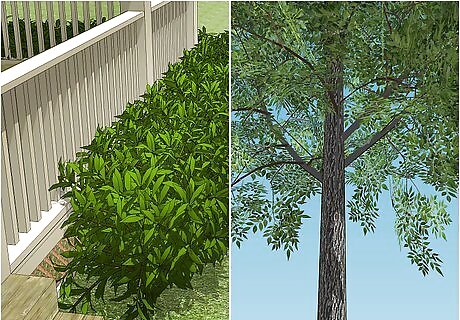
Search wooded or shady parts of your yard for webs. Garden spiders are resourceful about where they build their webs. Look for classic round spider webs in the garden, along hedges, near patios, in shrubs, or around trees. It may be easier to spot the webs in the morning when they're covered with sparkling dew. You can also look in corners of garden sheds or on the outside of your house for spider webs.
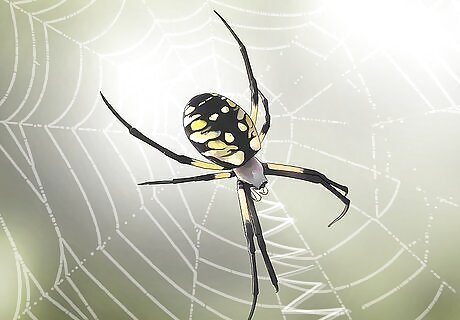
Identify what a garden spider looks like. Once you've found a web, look at the spider that's on it. A garden spider will have an egg-shaped abdomen that's mainly black. A male garden spider will have pale yellow patches on the abdomen and the female will have bright yellow patches.Did You Know? Garden spiders are between ⁄4 millimetre (0.0098 in) and 1.1 inches (2.8 cm) long. The females are up to 3 times larger than the males.
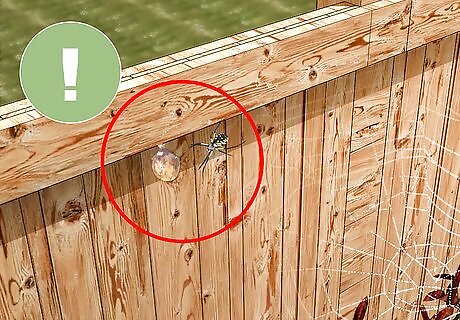
Leave a spider if you see the egg sac attached to the web. The female spider should stay in the web so she can prevent the sac from being attacked by other insects, such as ants. The egg sac will look like a very tiny, papery bag and it's usually placed near the center so the female spider can protect it.
Creating a Habitat
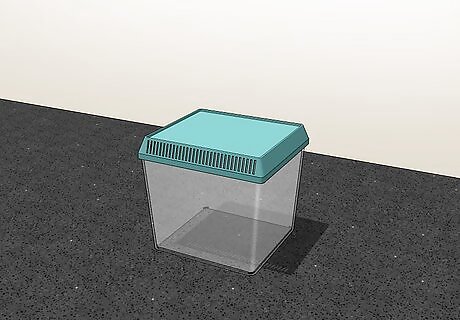
Purchase a cage or terrarium. Since spiders don't need a lot of space, you can purchase a small spider cage or terrarium from your local pet store or online. Ensure that the container has a secure lid so your spider can't get out. Many extra-small containers you can buy at the pet store are around 4 by 7 inches (10 cm × 18 cm) in size. The lid should also have some ventilation so your garden spider can get fresh air.
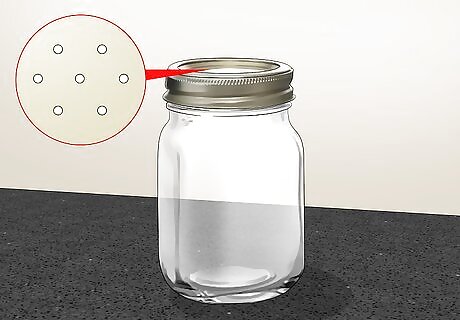
Make your own cage if you don't want to buy one. You can easily make modifications to a simple container or jar instead of buying a spider cage. The container should have a lid that you can close or screw onto the container. Then ask an adult to make a few holes in the lid so your spider can get fresh air.Tip: If you don't want to poke holes in a lid, cut a piece of fine wire mesh to match the shape of your lid. Place the mesh over the top of a jar and screw the band on to keep the mesh in place. The air holes should be small enough that the spider can't escape through them.

Add soil, leaves, and sticks to the cage. Spread about 1 inch (2.5 cm) of garden soil across the bottom of the cage. Gather sticks, branches, and leaves from your yard and scatter them in the cage. This will give the spider material to weave a web from and places to hide or climb. Use yard material that hasn't been sprayed with pesticides or insecticides.
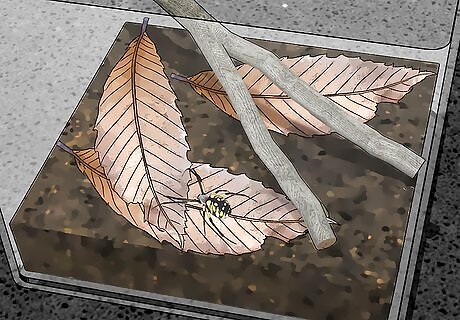
Put the spider in the cage. Once you've prepared the cage and found a garden spider, take a jar or small plastic tub and hold it in front of the spider's web. Hold the lid directly behind the spider and bring it towards the container so the spider is trapped. Then release the spider into the prepared habitat. It's fine if you get some of the spider's web in the jar.
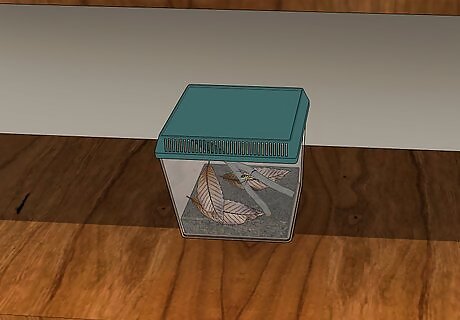
Place the cage in a secure spot in your house. Since garden spiders are exposed to outside temperatures, they'll be fine with the temperatures in your house. Put the cage or terrarium somewhere out of reach of small children or pets. Since the spider could overheat if you put it in direct sunlight, don't put the cage in a window.
Keeping the Spider as a Pet
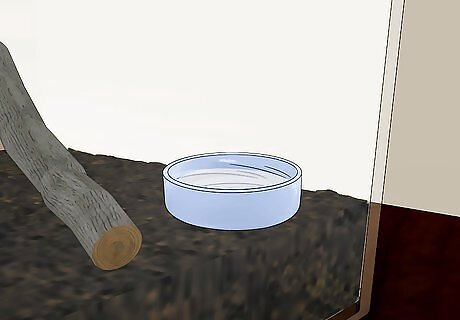
Set out water for your spider. Since most garden spiders are small, your garden spider only needs a little water in its cage. Take a plastic bottle cap and turn it upside down. Fill it with water and set it in the cage to act as a water dish. If you prefer, fill a spray bottle with water and spritz the spider's web once every day. Ensure that the inside of the cage doesn't become damp or it could mold.
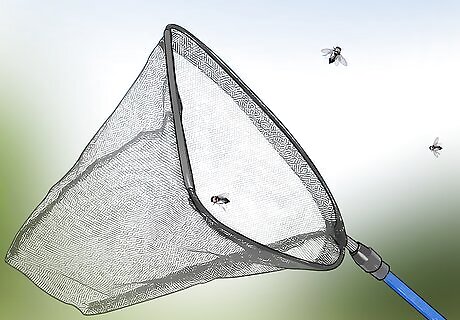
Gather insects to feed the garden spider. Use a net to catch flying insects, such as butterflies, wasps, and flies. These are the insects your garden spider usually catches in its web and eats. If you'd rather buy insects, purchase crickets from your local pet store. Keep in mind that the spider may prefer flying insects.
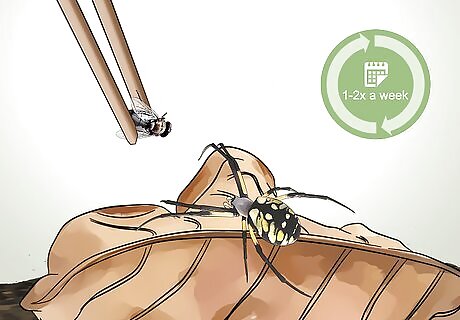
Offer insects to the spider 1 to 2 times a week. Garden spiders don't need a lot of feeding since they'll be able to eat on a single insect for a while. Place 1 of the insects that you caught or purchased into the spider's web 1 to 2 times every week. Space out your feedings so you're not leaving the spider too much food in its web. For example, instead of feeding on Monday and Tuesday, feed the spider on Monday and Friday.
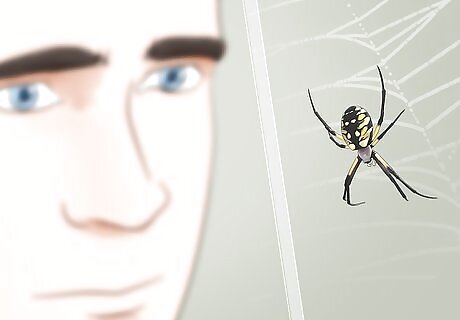
Observe your garden spider in its cage. Watch your spider in its cage and pay attention to what it likes to eat. You may even be able to see it repairing or spinning the web.Did You Know? You don't need to pick up the spider to observe it. It will actually feel more comfortable in the habitat you made for it than in the palm of your hand.




















Comments
0 comment